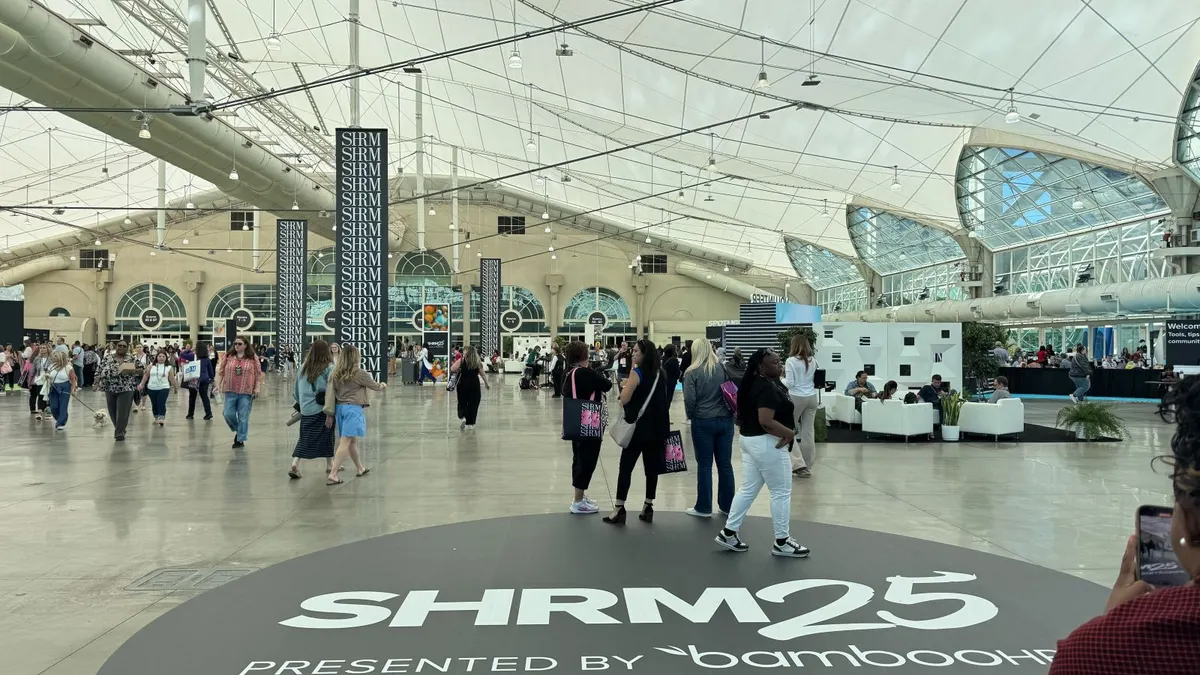What, exactly, constitutes a “tank top”? Can sandals ever qualify as business casual attire? How short is too short? What to do about that tattoo?
If you’ve been in HR any length of time, you know that dress code questions are an ongoing source of confusion and concern, especially when issues of gender identity, race and religion come into play.
In the past, workplace dress codes were often highly descriptive (and proscriptive), comprising lengthy lists of specific apparel that could and could not be worn at work that could frighten or confuse many a new employee. These days, however, workplaces are moving toward simpler dress codes — some of which consist of just two words.
More detail can mean more legal risk
“There was a time when employers tried to be detailed, but now the more detailed potentially the more risk,” Jonathan A. Segal, a partner at Duane Morris LLP and managing principal of the Duane Morris Institute, told HR Dive.
Detailed dress codes can be problematic for two reasons, Segal said.
First, you are sending a meta-message that “everyone here has to dress a certain way.”
Second, he notes, “requiring uniformity when it’s not necessary creates a cultural issue.” He provided the example of a dress code that requires all employees to wear slacks — but what happens when an employee wants to wear a sari? “This can lead to religion bias issues and national origin bias issues based on someone’s culture,” Segal said.
Current dress code trend? Less is more.
Segal said he is increasingly seeing more general dress codes: Employers are telling employees to “dress appropriately,” “dress professionally,” or wear “business attire” without getting into specific details. These sorts of broad policies give employers wide latitude without getting into what he calls “look requirements” that can lead to bias claims.
What about uniforms? “You can say, ‘Uniforms are generally required and if you need an accommodation, let us know,’” Segal said.
As companies periodically revise their dress code policies, Segal said, “less detail is more. This is absolutely a trend that I’m seeing.”
Dress codes and transgender employees
The law generally says you can have different dress requirements for men and for women, as long as there’s not a qualitative difference in what’s required, Segal said. And, while you can get into potential issues of gender identity and what that means, you probably don’t need to. “If someone is transitioning to the other gender, you let them dress in accordance with their gender identity,” he says.
This isn’t simply good policy — the law is moving in this direction as well. Earlier this year, for example, the 6th U.S. Circuit Court of Appeals ruled in Aimee Stephens v. R.G. &. G.R. Harris Funeral Homes, Inc. (No. 16-2424) that discrimination on the basis of transgender and transitioning status violates Title VII.
This comports with EEOC guidelines relating to LGBT-related claims. The EEOC views bias against transgender employees as unlawful sex discrimination, which would also include denying an employee equal access to a restroom corresponding to the employee’s gender identity, or harassing a transgender employee by “intentionally and persistently” failing to use the name and gender pronoun that correspond to the gender identity with which the employee identifies.
EEOC’s take
While the EEOC largely declined to comment, EEOC spokesperson Christine Saah Nazer told HR Dive that “the law is still in flux on this topic.” Nazer referred to the Office of Personnel Management (OPM) guidelines on dress and appearance, which are consistent with the EEOC’s guidelines mentioned above. The OPM guidelines state, in part:
"Agencies are encouraged to evaluate, and consider eliminating, where appropriate, gender-specific dress and appearance rules ... agency dress codes should be applied to employees transitioning to a different gender in the same way that they are applied to other employees of that gender. Dress codes should not be used to prevent a transgender employee from living full-time in the role consistent with the individual’s gender identity, nor should they be used to prevent an employee from maintaining a gender-neutral appearance."
A rule of reason
Broad dress codes do require some interpretation and judgment calls, but they also allow for the application of good old-fashioned common sense.
Segal said he has a client with a “dress professionally” dress code. When that client had an employee come in wearing a T-shirt with a violent message on it, he told the client, “Well, you have a workplace violence policy—plus, that’s not dressing professionally.”
Simple — or as simple as things ever get in the world of HR.




















